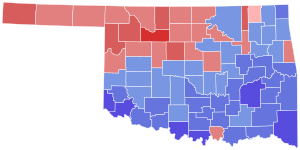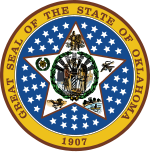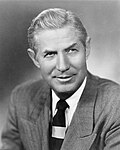
The 1944 United States Senate election in Oklahoma took place on November 7, 1944. Incumbent Democratic Senator Elmer Thomas ran for re-election to a fourth term. Thomas once again faced a stiff challenge in the Democratic primary, this time from Congressman Wesley E. Disney and Lieutenant Governor James E. Berry. As was the case in 1938, Thomas won renomination only with a narrow plurality. In the general election, he faced former State Senator William J. Otjen, the 1942 Republican nominee for Governor. Though Thomas's performance was much reduced compared to six years prior, he still defeated Otjen by a wide margin.

The 1932 United States Senate election in Oklahoma took place on November 8, 1932. Incumbent Democratic Senator Elmer Thomas ran for re-election to a second term. Thomas faced a crowded path to renomination, and only won the Democratic primary following a runoff election with attorney Gomer Smith. On the Republican side, oil magnate Wirt Franklin similarly won the Republican nomination in a runoff election. Thomas overwhelmingly defeated Franklin to win re-election, aided by Democratic presidential nominee Franklin D. Roosevelt's landslide win in Oklahoma over Republican President Herbert Hoover.

A general election was in the U.S. state of Oklahoma on November 4, 2014. All of Oklahoma's executive officers were up for election as well as the state's five seats in the United States House of Representatives and both of the states United States Senate seats. Primary elections were held on June 24, 2014, and primary runoffs were held on August 26, 2014.

The 1920 United States Senate election in Oklahoma took place on November 2, 1920. Incumbent Democratic Senator Thomas Gore ran for re-election to a third term. However, he was defeated in the Democratic primary by Congressman Scott Ferris. In the general election, Ferris faced fellow Congressman John W. Harreld, the Republican nominee. Likely helped by Republican presidential nominee Warren G. Harding's victory in Oklahoma over Democratic nominee James M. Cox, Harreld defeated Ferris by a similar margin to Harding's.

The 1942 United States Senate election in Oklahoma took place on November 3, 1942. Incumbent Democratic Senator Joshua B. Lee ran for re-election to a second consecutive term. After winning the Democratic primary against several strong opponents, Lee advanced to the general election, where he was originally set to face former Republican Senator William B. Pine. However, shortly after winning the Republican primary, Pine died; the state Republican Party tapped businessman Edward H. Moore as its replacement nominee. In a favorable Republican environment, Moore defeated Lee by a wide margin to win his first and only term in the U.S. Senate.

The 1938 United States Senate election in Oklahoma took place on November 8, 1938. Incumbent Democratic Senator Elmer Thomas ran for re-election to a third term. He faced a spirited challenge in the Democratic primary from Congressman Gomer Smith and Governor E. W. Marland, but won the nomination with a slim plurality. In the general election, Thomas faced former State Senator Harry O. Glasser, the Republican nominee. Despite the nationwide trend favoring Republicans, Thomas overwhelmingly won re-election.

The 1956 United States Senate election in Oklahoma took place on November 6, 1956. Incumbent Democratic Senator Mike Monroney ran for re-election to a second term. He avoided a contentious Democratic primary when Lieutenant Governor Cowboy Pink Williams declined to challenge him and easily won renomination. In the general election, he faced Republican state party chairman Douglas McKeever. Even though President Dwight D. Eisenhower was winning the state handily, Monroney won re-election by a wide margin.

The 1950 United States Senate election in Oklahoma took place on November 7, 1950. Incumbent Democratic Senator Elmer Thomas ran for re-election to a fifth term. However, though he had successfully beat back primary challengers in past elections, he was ultimately defeated by Congressman Mike Monroney. Monroney advanced to the general election, where he faced Reverend Bill Alexander, the Republican nominee. Despite the national Republican landslide, Monroney defeated Alexander by a wide margin, holding the seat for the Democratic Party.

The 1924 United States Senate election in Oklahoma took place on November 4, 1924. Incumbent Democratic Senator Robert Latham Owen declined to run for re-election. In a crowded Democratic primary, impeached former Governor Jack C. Walton won the party's nomination with a narrow plurality. In the general election, he faced businessman William B. Pine, the Republican nominee. Though Democratic presidential nominee John W. Davis narrowly won the state over President Calvin Coolidge, Walton's unpopularity and controversy caused Democrats to lose the seat; Pine defeated Walton in a landslide.

The 1926 United States Senate election in Oklahoma took place on November 2, 1926. Incumbent Republican Senator John W. Harreld ran for re-election to a second term. After facing many challengers in a crowded Republican primary, he advanced to the general election. In the Democratic primary, Congressman Elmer Thomas beat out a similarly crowded field, which included former Governor Jack C. Walton, to win his party's nomination with a plurality. In the general election, Thomas defeated Herrald in a landslide, winning his first of four terms in the U.S. Senate.

The 1930 United States Senate election in Oklahoma took place on November 4, 1930. Incumbent Republican Senator William B. Pine ran for re-election to a second term. In the Democratic primary, former U.S. Senator Thomas Gore emerged victorious in a crowded Democratic primary that included three former Governors and one of the first female candidates for statewide office. He won a slim plurality in the initial election and defeated C. J. Wrightsman, an oilman from Tulsa, in the runoff by a wide margin. In the general election, aided by the national Democratic landslide, Gore narrowly defeated Pine, returning to the Senate for one final term.

The 1936 United States Senate election in Oklahoma took place on November 3, 1936. Incumbent Democratic Senator Thomas Gore ran for re-election to his second consecutive term, and fifth term overall. He ended up easily losing renomination, however; he placed a distant fourth in the Democratic primary. A runoff election between Congressman Joshua B. Lee and Governor Ernest W. Marland resulted in a landslide win for Lee. In the general election, Lee faced Republican nominee Herbert K. Hyde, whom he overwhelmingly defeated.
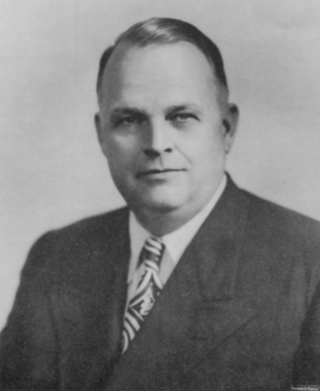
The 1954 United States Senate election in Oklahoma took place on November 2, 1954. Incumbent Democratic Senator Robert S. Kerr ran for re-election to a second term. He faced strong competition in the Democratic primary from former Governor Roy J. Turner, and though he won a sizable victory over Turner in the primary, he fell shy of an outright majority. Turner, however, withdrew from the race before a runoff election could be held. On the Republican side, U.S. Attorney Fred Mock won the nomination following a runoff against newspaper publisher Raymond Fields. In the general election, Kerr ended up easily defeating Mock, but with a significantly reduced victory from 1948.

The 1960 United States Senate election in Oklahoma took place on November 8, 1960. Incumbent Democratic Senator Robert S. Kerr ran for re-election to a third term. He won the Democratic primary in a landslide and then faced former U.S. Attorney B. Hayden Crawford, the Republican nominee, in the general election. Even as Vice President Richard Nixon was winning Oklahoma in a landslide over John F. Kennedy, Kerr was able to defeat Crawford by a wide margin, winning his third term. However, Kerr died just shy of two years into his third term, on January 1, 1963. He was replaced by Governor J. Howard Edmondson in the Senate and a special election was held in 1964.

The 1966 United States Senate election in Oklahoma took place on November 8, 1966. Democratic Senator Fred R. Harris ran for re-election to a second term, and his first full term. After winning an easy victory in the Democratic primary, he faced attorney Pat J. Patterson, the Republican nominee, in the general election. Patterson wasn't viewed as a strong candidate against Harris, but the national Republican landslide helped make the race somewhat close. Harris ended up narrowly defeating Patterson to win his final term in the Senate.
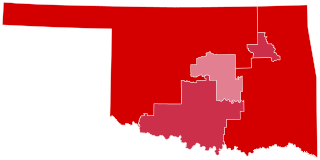
The 2022 United States House of Representatives elections in Oklahoma were held on November 8, 2022, to elect the five U.S. representatives from the state of Oklahoma, one from each of the state's five congressional districts. The primary elections for the Republican. Democratic, and Libertarian parties' nominations took place on June 28, 2022.
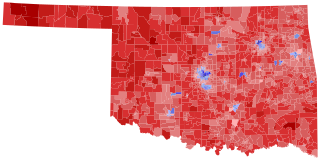
The 2022 Oklahoma gubernatorial election was held on November 8, 2022, to elect the governor of Oklahoma. Incumbent Republican Governor Kevin Stitt was re-elected to a second term, defeating his Democratic challenger Joy Hofmeister. former Republican state senator Ervin Yen ran as an independent, and Natalie Bruno was the Libertarian nominee.

The 2022 Oklahoma Senate general election were held on November 8, 2022. The primary elections for the Republican, Democratic, and Libertarian parties' nominations took place on June 28, 2022. Runoff primary elections, if no candidate received 50% in the June 28 vote, took place on August 23. All candidates had to file between the days of April 13–15, 2022. Oklahoma voters elected state senators in 24 of the state's 48 Senate districts. State senators served four-year terms in the Oklahoma Senate.

A general election was held in the state of Oklahoma on Tuesday, November 8, 2022. The primary election was held on Tuesday, June 28, 2022. Runoff primary elections, where necessary, were held on Tuesday, August 23. The candidate filing period was April 13, 2022 to April 15, 2022.
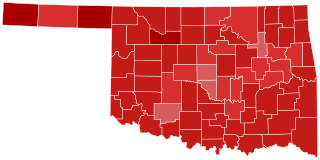
The 2022 Oklahoma Attorney General election took place on November 8, 2022, to elect the next attorney general of Oklahoma. The primary election was scheduled for Tuesday, June 28, 2022. The candidate filing deadline was April 15, 2022.
